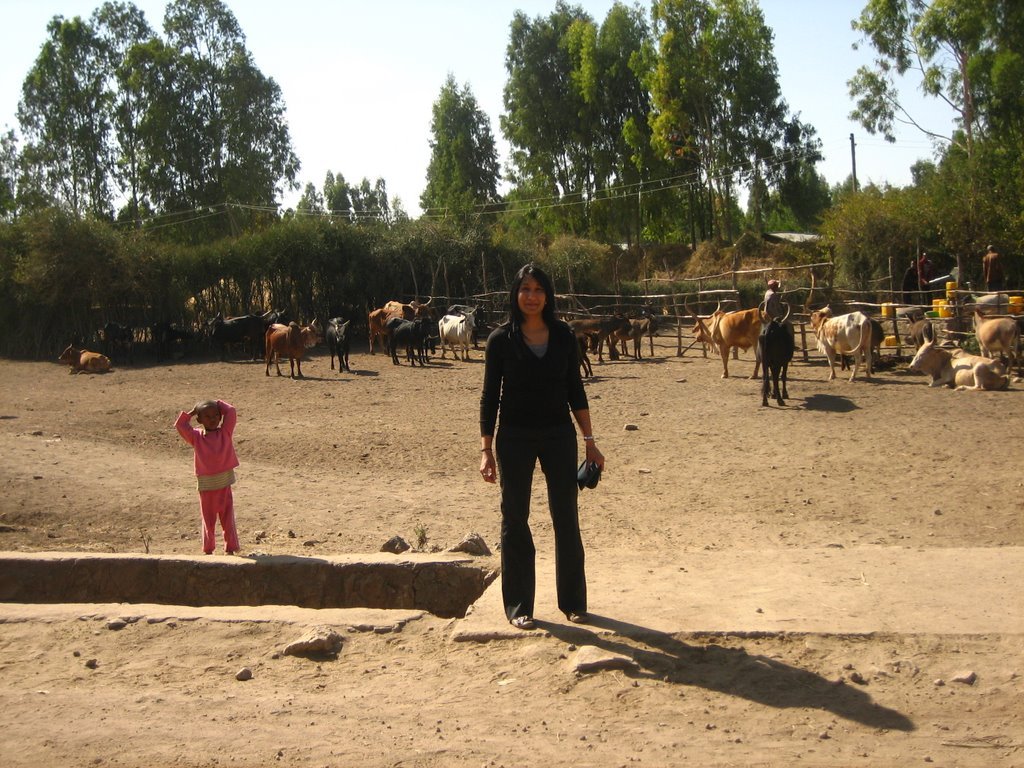Collaborations Towards Change: Opportunities for Indian Agriculture & Technology
Agriculture in India remains a prominent industry responsible for nearly half of the labor force. In the face of the growing need to increase yields sustainably, there is increasing opportunity for innovation, entrepreneurship and collaboration. Thanks to Indiaspora, I had the chance to join a series of discussions pertaining to agriculture and technology in India, including the January 2018 Tech Triangle Summit which brought together Indian and Israeli delegations, where I spoke on an ag tech panel. These discussions, and the ensuing meetings between Prime Minister Modi and Israeli Prime Minister Netanyahu, focused on agriculture, technology and entrepreneurship. This article outlines the role of agriculture in India and the impact of partnerships, technology and entrepreneurship in creating the step change we need in agriculture.Agriculture is critical. Let’s face it, we all need to eat to survive. Agriculture is a foundational element of our human history, its roots thread through all cultures across the world. It is where all sectors and disciplines come together. Globally, we need to feed 7.8 billion people, quickly approaching over 8 billion by 2030 and nearly 10 billion in 2050. A robust, healthy agricultural industry is critical to meet this demand while nurturing local economic development and improving the conditions of the environment. Not only is agriculture foundational to human society, it is quite unique. Agriculture is characterized by several elements, that together, distinguish it from other industries:
- Long timelines between action and outcomes. Agriculture is dictated by seasons and biology, and is the embodiment of patience and attention. One seed variety can take years to be commercialized and widely used no matter the benefits.
- Magnitude of external factors on productivity. Agriculture is at the mercy of many factors, some beyond human control. Food production is driven by weather, local economic activity, public health and many others. While farmers buffer and work around these, there are always limits to how they can manage them. Environmental pressures (e.g., weather, pests, predation by wild animals) can wreak significant havoc and are incredibly difficult to address.
- Risk, uncertainty and speed. The pace of agriculture often appears slow to outsiders. In agriculture, the uncertainty is great (owing in part to the external pressures mentioned above) and risks are amplified and unevenly borne by individual farmers. It is not surprising that farmers are cautious when switching technologies as failure translates to starvation and economic devastation in as little as a matter of weeks or months. Even with a desire to adopt new innovations, producers must contend with the amplified costs of one misstep.
- Highly variable and localized solutions. While much of the agricultural knowledge and technologies share commonalities globally, the brunt of agriculture occurs on a very small geographic scale. Agriculture is highly variable, driven by the minute differences in soil, terrain, and other conditions. These lead to major variations within the same village, and often, on the same farm. It is why we have seen shifts such as a spike in precision agriculture or increased attempts to utilize high volumes of geographic data to pinpoint and address granular variations that greatly impact production outcomes.
The unique elements of agriculture require adopting different criteria and expectations from other industries. The success of entrepreneurs, investors and partnerships in this space rely on the ability to properly adjust for these differences and avoid inadvertently applying a cookie-cutter approach.Upping the agricultural game in India. India is one of the most diverse and broad agricultural countries in the world. It houses the full spectrum of agro-climatic zones, grows the full suite of crops and has the full range of farmers, from smallholders to large scale farms and everything in between. Agriculture accounts for about 16% of India’ GDP, and encompasses over 40% of its labor force. It is an integral part of the Indian economy and impacts the livelihood of many. Strengthening the agricultural sector would bring economic stability to the nearly 75% of Indian families dependent on rural incomes and the 770 million living in rural poverty, through a range of mechanisms (e.g., creating more robust supply chains, improving access to credit and input markets, incentivizing neighboring farms to leverage equipment sharing). Climate change and major environmental issues (e.g., pollution, habitat conversation, biodiversity loss) are intimately entwined with agriculture. Climate pressures are growing quickly; 6 of the 10 most polluted cities in the world are in India. We are past preparing for climate change to come; it is already here and wreaking havoc. As climate pressures increase tangibly throughout India, the urgency to fundamentally shift agriculture to be a solution as well as to proactively adapt to stay ahead of climate change impacts continues. As a widespread and diverse industry, there is no “canned” solution to the increased demand and the need for tailored strategies and products. But this is not a doom and gloom story – significant innovations have taken place in Indian agriculture as numerous talented people, from agronomists to field experts to producers, inhabit this space. India stands at an interesting juncture with the ability to drive real change in the agricultural industry. On the supply side, India has increased its capacity and capabilities with significant expertise across the value chain, driven by unprecedented domestic and international demand for a broad range of agricultural products from across India. Technology has always played a central role to Indian agriculture. From the days of the Green Revolution, led by Dr. Norman Borlaug and scientists around the world, India saw substantial shifts in production in the 1960s. In recent years, technology and investment in agriculture has increased substantially ranging from GPS and robotic systems, aerial images and sensors. These technologies hold many promises and could address major gaps ranging from market failures to optimizing resource use to improving decision-making. However, technologies that are fit-for-purpose, scalable and cost-effective are not easy to come by for India’s diverse landscape and unique agricultural barriers. This is where entrepreneurs and partnerships, the two themes of the January 2018 India-Israeli discussions and subsequent discussions, come to fruition.  Entrepreneurial energy as an engine of change.Entrepreneurs are able to deliver existing technologies that lead to greater adoption by end users or create new technologies, tailored for specific conditions. They fill gaps in conventional systems by providing nimbleness and bring fresh, innovative ideas from diverse and passionate minds. India has a long, successful history of harnessing entrepreneurial energy at all levels. There are several areas where entrepreneurs could make a major difference in Indian agriculture:
Entrepreneurial energy as an engine of change.Entrepreneurs are able to deliver existing technologies that lead to greater adoption by end users or create new technologies, tailored for specific conditions. They fill gaps in conventional systems by providing nimbleness and bring fresh, innovative ideas from diverse and passionate minds. India has a long, successful history of harnessing entrepreneurial energy at all levels. There are several areas where entrepreneurs could make a major difference in Indian agriculture:
- Logistics and operations. Agriculture is a logistics game. The ability to manage products over time and space, and across disconnected value chains drives effectiveness. Agriculture desperately needs more operational solutions. Even with incredible investments, we are globally falling short of logistics solutions.
- Tailored smallholder solutions. A specific opportunity within logistics and operations solutions are fit-for-purpose smallholder solutions such as mechanization on a small-field level. Lack of adequate infrastructure (e.g., energy, telecom) limits the direct application of commercial logistics solutions. Innovations that address this gap for smallholders, with 85% of India’s farmers operating on less than 2 hectares of land.
- Infrastructure and transportation. India faces challenges due to gaps in agriculture infrastructure and transportation (for example, improved cold storage capacity). While large scale infrastructure improvements are costly, agile and innovative responses could substantially (and quickly) improve food security and farmer livelihood. For example, innovations to reduce food spoilage have a cascade effect through the food value chain, as well as positive externalities such as improved ability to use water resources sustainably.
- Water resources. Water scarcity in India is a longstanding societal problem. Specifically in agriculture, groundwater resources have been nearly depleted adding further pressures to food production. Developing infrastructure and operations to conserve and distribute water continues to be urgent. Collaborations, such as the Indian-Israeli cooperative agreement, bring together technology and entrepreneurial energy to extend greatly stretched water resources.
- Diversified production. Diversifying production provides numerous benefits including increased resilience, reduced economic and environmental risks, and increased food and nutritional access. For example, during a project in Ethiopia, we found mixing crops, especially higher-margin cash crops, could bolster smallholder economics and improve soil health. This scenario has played out around the world. Historically, agrarian systems were quite diverse especially in India. Diverse systems are more challenging to manage from a production angle, and new crops require new knowledge. Entrepreneurial solutions could bridge the gap, shortening the learning curve or facilitating market access for farmers selling their produce.
Besides the companies developing products and solutions, we should also consider individual farmers as entrepreneurs. Individual farmers run their own businesses and are naturally innovating to address gaps. They intimately understand the logistics, processes and systems that work (and do not). Given the right incentives, entrepreneurs have logical partners in individual farmers both as innovators as well as willing participants for trials of new ideas and products. By co-creating with farmers and designing operationally feasible solutions, we could see the technological shifts needed in this space. The power of entrepreneurs can be further optimized through partnerships. It’s a path best traversed together.Agriculture is about partnerships. Given the importance of food, governments have worked closely to support farmers and ensure a stable food supply. Cross-sector, private-public and cross-national partnerships all exist in abundance. They provide space to overcome traditional barriers within agricultural innovation by pairing complementary skills, facilitating the utilization of resources and accelerating knowledge transfer. Global collaborations have long driven innovation in agriculture. For example, the CGIAR system was founded to collaborate on agricultural research globally, ultimately resulting in 15 CGIAR Research Centers across 14 countries. These Centers collaborate closely with hundreds of partners, including national and regional research institutes, civil society organizations, academia, development organizations and the private sector. They provide a means to transfer knowledge and have been instrumental in numerous technological shifts in agriculture. The US-India-Israel Relations Virtual Summit , which Indiaspora co-sponsored, focused on this trilateral partnership for strategy, technology and development including agriculture, and each country contributes their unique knowledge and experience. This cross-national collaboration holds significant opportunities for India’s agricultural sector and opens to the door to innovation and entrepreneurship. Thoughtfully structured partnerships can bolster the natural strengths of entrepreneurship by addressing the common entrepreneurial challenges like scale, capital and networks, which are key to agriculture. Global multinationals know the benefits as we see a continued wave of investment in start ups and entrepreneurial accelerators, e.g., Cargill and Ecolab teamed up to invest in an agriculture and food accelerator in Minnesota, one of many such major investments by large companies across the globe. Bringing together the innovation of entrepreneurs with the capital and reach of government and research organizations opens the door to solving these complex challenges.Bringing it all together. Lack of action to strengthen and expand India’s agricultural sector will have severe implications including economic losses, increased food insecurity, societal upheaval and continued adverse environmental impacts. However, there are many reasons to be hopeful. With increased awareness, action and movement, more resources and talent are collaborating with farmers and the industry overall. Leveraging India’s strengths in technology, entrepreneurial mindset, effective partnerships and long history of agricultural knowledge provides the answers to the onerous challenges of feeding the world, improving the livelihood of farmers and mitigating environmental and climatic issues.
 Dr. Shefali Mehta is the Founder and Principal of Open Rivers Consulting. An environmental and agricultural economist and statistician, she focuses on developing strategy and change plans for organizations undergoing transformation. She founded and leads Open Rivers Consulting Associates to tailor solutions and create holistic strategies for a range of clients. Prior to founding Open Rivers, Dr. Mehta worked in roles across private, public and non-profit sectors including McKinsey, Syngenta, the Soil Health Partnership, amongst others. She serves or has served as a Board member for various groups including Bountifield, Pheasants Forever, Minnesota Invasive Terrestrial Plants and Pest Center (MITPPC), the School of Statistics at University of Minnesota, The Gates Scholar Advisory Council, amongst others.
Dr. Shefali Mehta is the Founder and Principal of Open Rivers Consulting. An environmental and agricultural economist and statistician, she focuses on developing strategy and change plans for organizations undergoing transformation. She founded and leads Open Rivers Consulting Associates to tailor solutions and create holistic strategies for a range of clients. Prior to founding Open Rivers, Dr. Mehta worked in roles across private, public and non-profit sectors including McKinsey, Syngenta, the Soil Health Partnership, amongst others. She serves or has served as a Board member for various groups including Bountifield, Pheasants Forever, Minnesota Invasive Terrestrial Plants and Pest Center (MITPPC), the School of Statistics at University of Minnesota, The Gates Scholar Advisory Council, amongst others.
